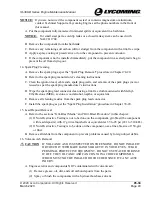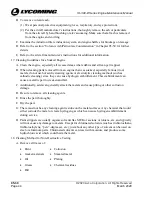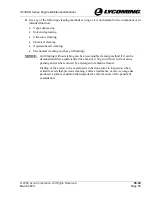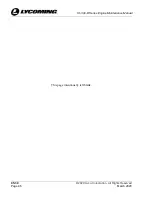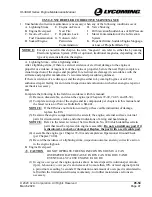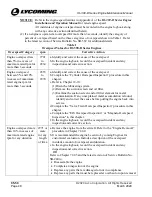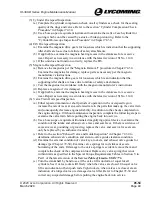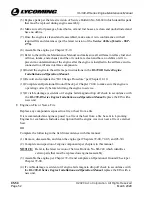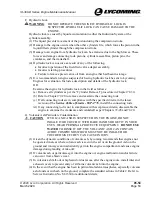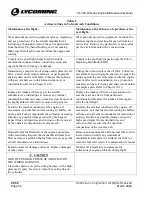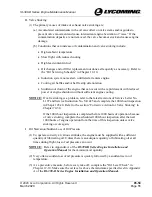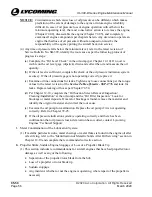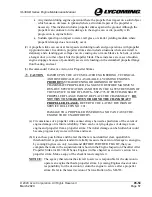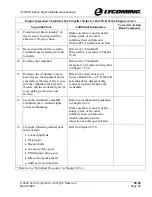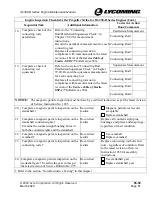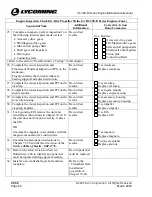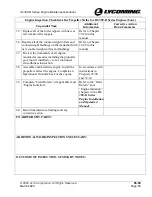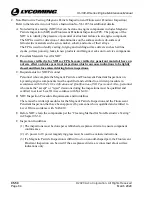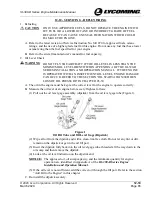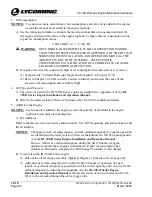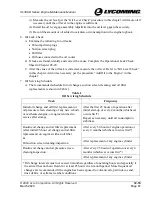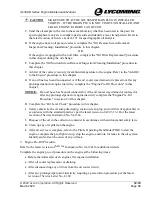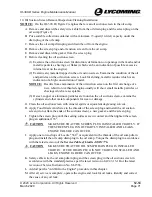
IO-390-D Series Engine Maintenance Manual
05-50
© 2020 Avco Corporation. All Rights Reserved
Page 56
March 2020
IO-390-D Series Engine Maintenance Manual
NOTICE:
Circumstances which cause loss of oil pressure can be different which makes
prediction of the extent of damage to the engine or future engine reliability
difficult. In case of oil pressure loss or engine operation with oil below the
minimum operating level, the most conservative action is to remove the engine,
(Chapter 72-00), disassemble the engine (Chapter 72-05), and completely
examine all engine components per chapters herein. Any decision to operate an
engine that had loss of oil pressure without an inspection must be the
responsibility of the agency putting the aircraft back into service.
(4)
Any time oil pressure falls below the minimum level, refer to the latest revision of
Service Bulletin No. SB-399, identify the root cause as per the following protocol of
progressive steps:
(a)
Complete the “Oil Level Check” in the oil sump (per Chapter 12-10). If no oil is
visible on the oil level gage (dipstick), drain and collect the oil and measure the oil
quantity.
(b)
If the oil level is sufficient, complete the check of the oil pressure indication system
accuracy. If the oil pressure gage is not operating correctly, replace it.
(c)
Examine oil line connections for leaks. Tighten any loose connections per the torque
values in the latest revision of the
Service Table of Limits - SSP-1776
and look for
leaks. Replace leaking oil hoses per Chapter 72-50.
(d)
Per Chapter 12-10, complete the “Oil Suction Screen Removal/Inspection/
Cleaning/Installation” at the oil sump and the “Oil Filter Inspection.” Look for
blockage or metal deposits. If metal or blockage is found, remove the material and
identify the origin of material and correct the root cause.
(e)
Examine the oil pump for malfunction. Replace the oil pump if it is not operating
correctly. Refer to Chapter 72-25.
(f)
If the oil pressure indication system is operating correctly and there has been
confirmation that oil pressure loss/oil starvation has occurred, contact Lycoming
Engines’ Technical Support.
J.
Metal Contamination of the Lubrication System
(1)
If metallic particles/residue, metal shavings or metal flakes is found in the engine oil after
oil servicing, refer to the “Identification of Metallic Solids After Oil Servicing” section in
Chapter 12-10 and complete the recommended corrective action.
K.
Propeller Strike, Sudden Engine Stoppage or Loss of a Propeller Blade Tip
(1)
This section includes recommendations for aircraft engines that have had propeller/rotor
damage as well as any of the following.
•
Separation of the propeller/rotor blade from the hub
•
Loss of a propeller or rotor blade tip
•
Sudden stoppage
•
Any incident, whether or not the engine is operating, where repair of the propeller is
necessary


